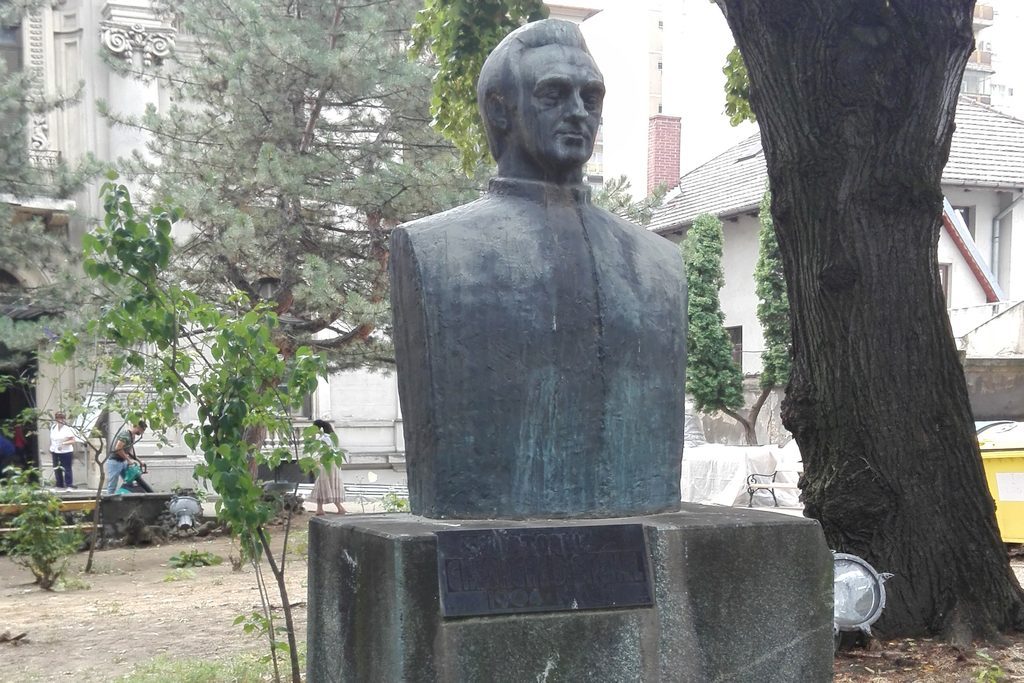

Gheorghe D. Anghel (born August 22nd 1904 in Drobeta Turnu Severin – died April 9th 1966, Bucharest) was a Romanian sculptor.
At the age of 19, after finishing the School for boys no. 3 and Traian High school, he leaves for Bucharest where he enrols in the School of Fine arts.
After attending the classes of sculptor Dimitrie Paciurea at the School of Fine arts in Bucharest, Anghel finalizes his training in Paris (1924-1937) under Antoine Injalbert.
However the true schools of the sculptor were in fact museums, monuments and parisian galleries, as he was interested in the French medieval cultural patrimony but also in the art of sculptors Rodin, Bourdelle, Maillol sau Despiau.
Here he has the opportunity to visit Brâncuși’s workshop and studies in museums and exhibits, interested in the monuments of old French architectures and sculptures.
The taste for rigurous and expressive forms is fuelled by the Romanian artistic legacy received through Paciurea’s lessons, by the French medieval cultural patrimony as well as by neoclassical artists’ preoccupations or the art of some modern French sculptors like Rodin, Bourdelle, Maillol, Despiau. Such cultural affiliations that he reaches through his own convinctions will make him evolve in a different direction than Brâncuși.
Anghel does not reject the impressionism experiences in sculpture, he does not consider the sansation filled modelling „impure”. He keeps in portrets – genre which has interested him all his life – a classical ideal, in the sense of the durable structure of the human being, of an interior solidity of unfelt clarity.
His realistic view of eternity makes him work generally in bronze and only rarely in stone (Bust of Enescu from the Romanian athenaeum). A mix of austerity and spontaneity, his works have a solemn attitude, far however from grandiloquence.
The masterpieces of his sculpture are the statue of Theodor Pallady, in the Craiova museum collection and the statue of Mihai Eminescu in front of the Romanian athenaeum.
The personal exhibits displayed were:
– 1940 in Paris
– 1943 at Sala Dalles, Bucharest;
– 1945 at Sala Dalles, Bucharest;
– 1956 in Bucharest;
– 1966 at Sala Dalles, Bucharest;
– 1967 in Craiova.
